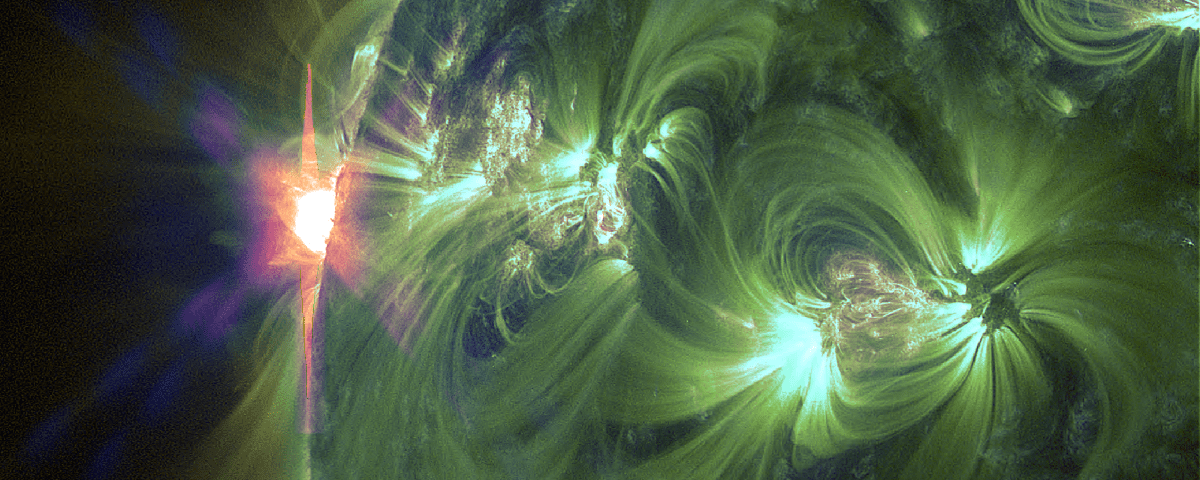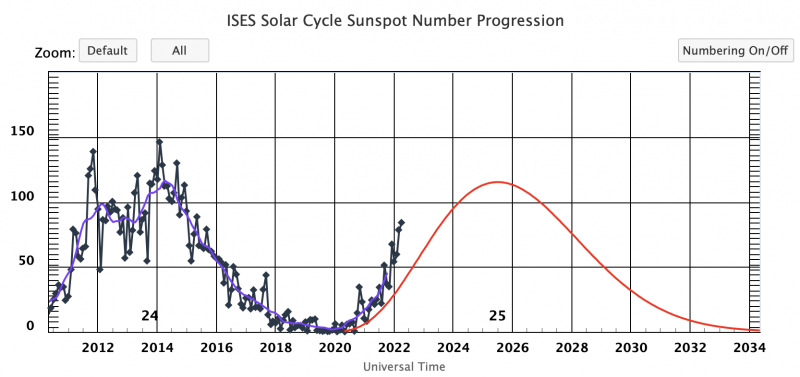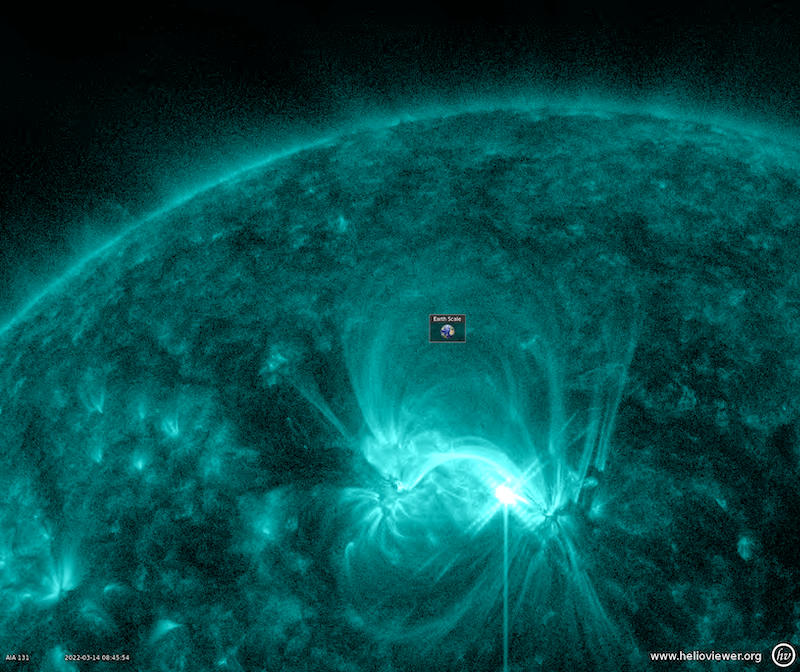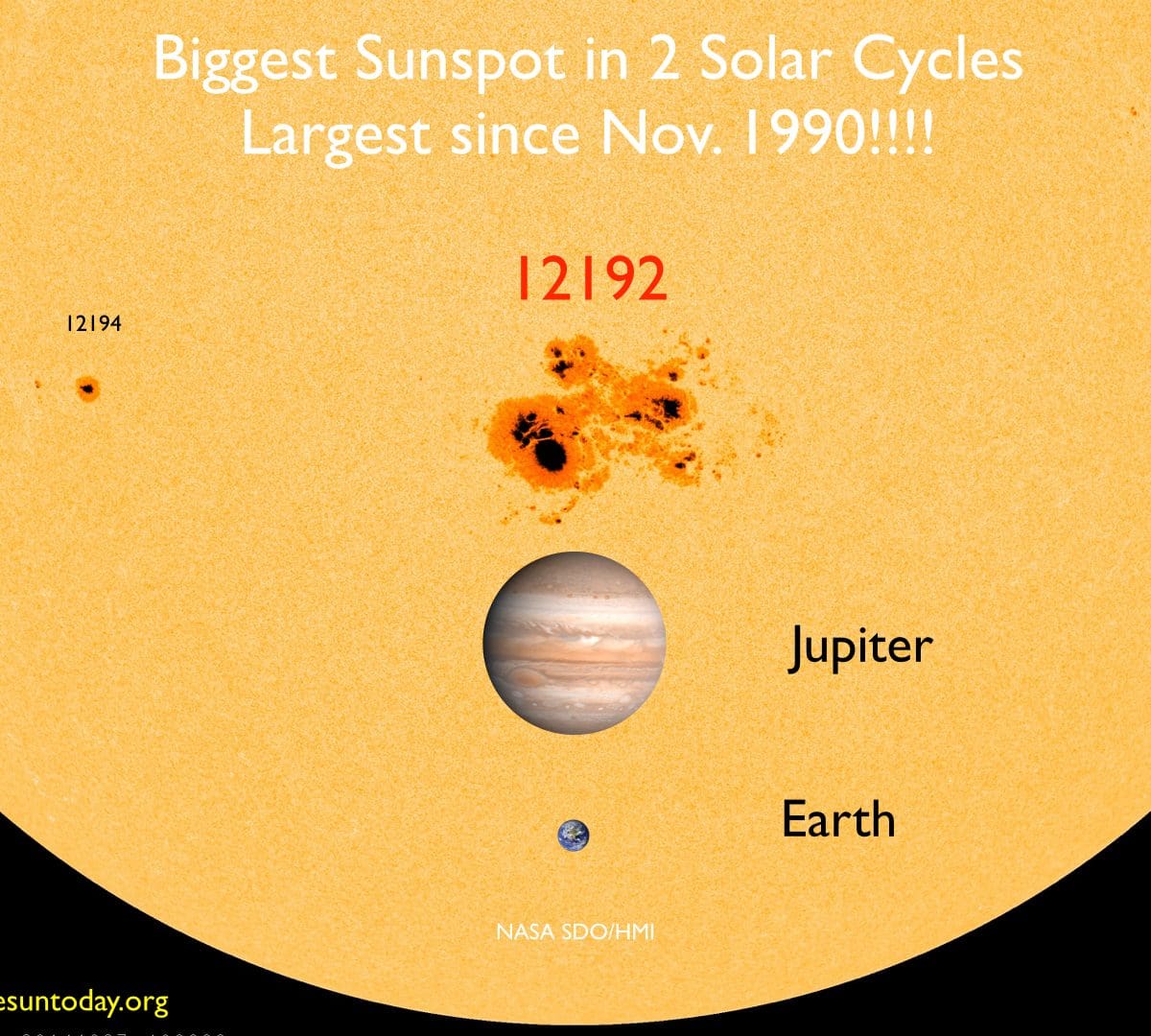
A new active region peaking around the edge of the sun released an X-class solar flare
At 2:17 UT or 10:17 pm EDT, an active region that has not yet rotated into view produced an X1.7 solar flare on May 13, 2013 (UT). This is the first X-flare of the year. The flare producing eruption also released a coronal mass ejection (CME) and a solar energetic particle event (SEP). Though the flare could be seen at Earth, the CME and SEP were directed away from Earth.

X flare from May 13, 2013. This is a composite image using the Solar Dynamics Observatory (SDO) 131 and 171 angstrom images.
The flare was partially blocked (occulted) by the sun and so was probably larger. Imagine a flash on a camera going off. If your are off to the side of the camera you still see the flash but some of the light reaching you is obstructed. In our case we can look “around the corner” by viewing the sun with the STEREO Behind spacecraft. We don’t yet have the full quality data but the intense flash is still very obvious in the EUVI instrument using the 195 angstrom wavelength camera.

X flare from May 13, 2013. This is a snapshot of the flare using the low quality STEREO Behind data from the 195 angstrom camera of the EUVI instrument.
The NASA Goddard Space Weather Research Center (SWRC) produced a computer model of the CMEs propagation. Their model indicates that the CME will impact the Sptizer Spacecraft on May 15, 2013 at 8 UT and it may brush past the STEREO B spacecraft at 18 UT.
credit: NASA/SDO, NASA SWRC, helioviewer.org, NOAA/SWPC





